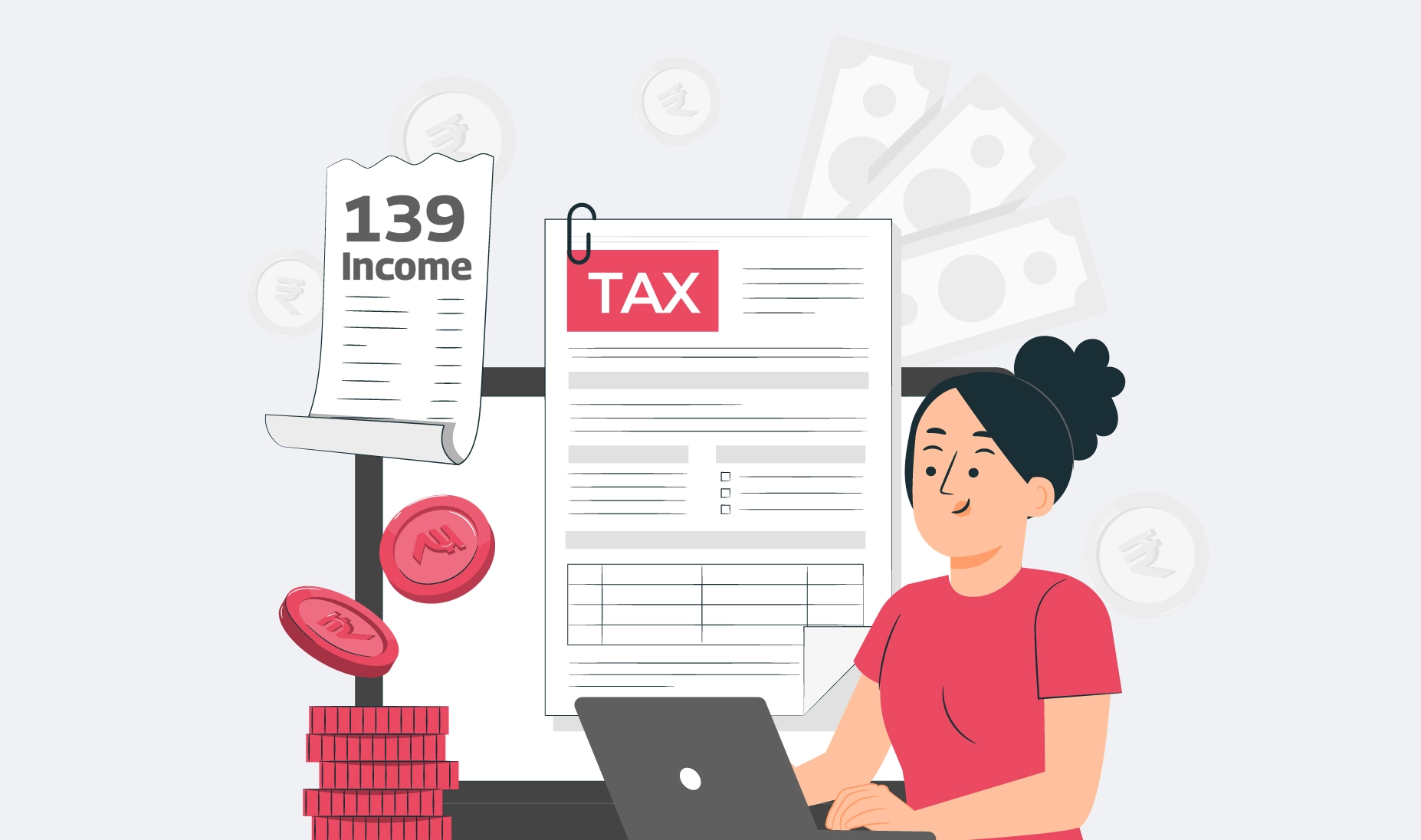5 Top Investment Options in India to get 50,000 Pension per Month, 2024

Retirement is a time that people dream of spending with their families relaxing without any worries. However, any financial crisis during retirement can spoil your dreams. To keep your financial health strong and steady during retirement, it is important to plan in advance.

Planning for retirement is important. In fact, retirement planning should be a crucial part of your financial decision-making process. We may earn well during our young age but as we turn old the options of earning become miniscule for us. Hence, it is better to stay prepared to deal with the loss of income after retirement. If you are in a public sector job, you may get a pension. However, the rising costs of living makes everything so expensive that the pension amount you receive may not be enough to suffice your and your family’s needs. Hence you need to create a corpus or accumulate enough capital to live a comfortable life when you retire. Creating a good retirement portfolio will make sure that you earn a monthly pension of INR 50,000 as pension.
How to Get a 50K Pension Per Month?
An INR 50,000 pension per month would depend on how much you save, for how long you save and when you want to receive the pension. So, if you have started your retirement portfolio in your 30s and you want the amount to start coming in during your 60s, you would have more time to invest and reap the benefits accordingly. On the other hand, if you do not have too many years to save before you could retire, you need to invest more.
However, if you plan to retire in just a few years, you would have to invest a larger amount to get the same kind of returns. Similarly, the investment portfolio you choose to invest in also determines the income you earn per month after retirement. For instance, equities like ULIP, Mutual fund etc. offer good returns. However, they are risky and dependent on market returns. If you invest around INR 9000 per month for 10-12 years in equities, you might get the desired amount after retirement. To get a 50K pension per month, you would need to invest around Rs. 9000 monthly for 10-12 years in such plans.
Alternatively, if you save on guaranteed plans of fixed income after retirement there would be low risk but the returns would depend on how the money invested and interest earned. The best and ideal investment method is rather to invest in a mix bag of high and low risk profiles to get better benefits.
SIPs are also good alternatives of a balanced profile of investment where you can invest in a fixed amount of money on a regular basis to receive good returns.
5 Best Investment options to get 50K Pension Per Month
Below are some investment options that could help you to earn INR 50,000 per month as pension:
1. National Pension Scheme (NPS Scheme):
This is a government of India initiated pension plan that helps investors to accumulate monetary backup after retirement. These savings plan let investors save methodically so as to create a source of income for the future. Here individual investors are joined and are reinvested in the market to receive added returns. When the investor nears the age of retirement, he is given the option to withdraw a portion of the corpus generated and he/she can use the remaining amount to buy an annuity plan from an insurance company to get monthly annuity after retirement.
How to calculate NPS investment returns using the NPS pension calculator?
Suppose you are 30 years old and you are planning to contribute to an NPS plan till you turn 60. Let’s say you are investing INR 11,000 for 30 years with a likely investment rate of 10%. In that case, your total investment accumulated would be over INR 2.5 Crores. Now at maturity, you must invest 40% of the corpus to buy an annuity plan to get 50k per month from NPS as pension.
What do you mean by the NPS Calculator?
National Pension System or NPS calculator is an online device used to evaluate the accumulated maturity amount of an NPS account. The calculator uses certain factors to estimate the maturity contributions and pension amount. Some of the factors considered are:
- Amount to be invested
- Age of applicant
- Investment type
NPS is a contribution-based pension scheme. Under NPS, the invested amount of the applicant is allocated among various asset classes like debt, equity, securities, etc. This makes calculating the return difficult without the use of the NPS calculator.
The NPS calculator offers an easy way to understand the likely growth of the investment in a simple and effective process.
Steps to use the NPS calculator
The NPS calculator estimates the maturity value of your NPS account online to give you precise results. There are two ways to evaluate the NPS. You can check the maturity value with the help of the calculator and you can also check the monthly investment you should make to reach the desired amount as a pension.
Steps to calculate NPS maturity value:
- Open the NPS calculator online and enter the desired amount to be invested
- Choose the strategy you want to apply to grow money under the NPS account depending on the risk type. There are 4 risk profiles to choose from such as aggressive, moderate, conservative, and custom.
- The age of the applicant is another important factor to consider while calculating NPS maturity through online NPS calculator
Results
As per the inputs offered, the NPS calculator will estimate the results in terms of the total amount invested, total earnings on the investment, and the overall maturity value of the investment. This will be portrayed in a graph for easy understanding of the investor.
Steps to calculate the monthly investment required for Desired NPS returns:
The NPS calculator is an exceptional tool that allows the investor to determine the exact sum to be invested to reach the desired returns as per your set goals. Here are the steps to follow:
- Open the NPS calculator online and enter the goal amount you wish to invest to reach the expected returns
- Choose the strategy you want to apply to grow money as per the pre-fixed risk profiles. There are 4 risk profiles to choose from such as aggressive, moderate, conservative, and custom as per your suitability and expected returns.
- The age of the applicant is another important factor to consider while calculating NPS maturity through the online tool of NPS calculator
Results
As per the inputs offered, the NPS calculator will estimate the monthly investment you are required to invest to get your desired returns. This will help you achieve the corpus you expect to reach at the time of maturity. The result will be displayed in the form of a pie chart to make the users understand the details of the investment.
What is the Formula for calculating NPS Pension? Examples
The National Pension System calculates returns using compounding interest. Here is the formula;
A = P (1+ r/n) ^ nt
Here,
A = Amount
P = Principal sum
r/n = Rate of interest per annum
N = Number of times interest compounds
T = Tenure
For example,
Mrs. Sandhu is 34 years old and is investing in an NPS account with a monthly contribution of INR 3000. She chose to invest under the profile of aggressive investment at a 10% return. The tenure of investment that she has is 26 years. (retirement age minus investment age, which is 60 – 34)
So, the return she can expect:
P = INR 9.36 lakh
Expected maturity value = INR 44.35 lakh
Who is Eligible to Use the NPS Calculator?
Any individual who is eligible to invest in an NPS account is eligible to use the NPS calculator online. The primary groups who can benefit from this online tool are:
- Employees working in the private sector who want to invest in an NPS account
- Individuals employed under government services can also use this online tool to estimate pension income easily as per the contributions/investments made
- Self-employed people are also eligible to use the online NPS tool to estimate their retirement plans
- Workers who are about to retire can also use the calculator to evaluate their pension amount to secure retirement planning
2. Unit-linked Insurance Plans (ULIPs):
The ULIPs are again market-linked plans of investment cum insurance which allow attractive returns on the basis of market performance. There are some exclusive retirement ULIPs that serve as a source of income after retirement of the investor. Under ULIPs, a portion of the premium paid is used for life cover, while the other portion is invested in equity and mutual funds. Here, the investor also has the option to switch between funds if he/she is unsatisfied with the returns. You may have to invest INR 11 – 12 thousand per month for a minimum 25 years to earn a 50K pension per month.
3. Annuity Plans:
When an investor invests in an annuity plan, he/she gets periodic payouts based on the investment amount. You can avail annuities on a monthly payout basis after retirement to fulfil your needs. Usually, annuities are paid out all through the lifetime of the investor. Investors, on the other hand, can buy annuity plans by paying a lump sum amount to receive monthly annuities later.
Types of Annuities
Annuities are of two types – Immediate and Deferred annuity.
Under the immediate annuity, monthly payment is offered to the investor as soon as the investment period gets over. Under the deferred annuities, payouts are allowed after the vesting time once the investments are done.
4. Guaranteed Return Pension Plans:
These plans are available with insurance protection options and they offer assured payout on a monthly basis after you retire. Further, assured return plans also secure your family members financially if any unfortunate event like your demise takes place. Under these plans, the investor gets lump sum payment at maturity in addition to a monthly pension option for a long duration after retirement. In this case, to receive INR 50,000 per month, you have to invest in a 100% guaranteed return plan for 10 years.
5. Mutual Funds:
These are again investment options that are market-linked, which offer good returns by investing in equity and debts. Being high on risk, the investor investing in these plans has to take risk. If you are looking to balance the risk, you can opt for systematic investment plans (SIPs). After you secure enough corpus through a mutual fund, you can take a portion of the amount for investing in annuity to ensure lifetime income after retirement.
For instance, if you invest INR 12,000 per month for over 20 years, you can accumulate an investment of INR 28.8 lakhs. Suppose, the rate of interest on the amount invested is 12%. Thus, after 20 years, you will receive INR 1.2 Crore as the total value of investment. A portion of this amount can be reinvested in annuities to earn a pension of INR 50,000 per month.
FAQs: How to get a 50K Pension Per Month?
There are many wonderful schemes where you can invest INR 10-15 thousand per month to get an INR 50,000 return as a monthly pension.
If you want to get an INR 30,000 pension per month, you must invest a likely amount of INR 5,000 per month for over 10 – 15 years.
Here are some best pension plans in India:
~ LIC's New Jeevan Shanti.
~ HDFC Life Click 2 Retire.
~ SBI Life Saral Retirement Saver.
~ ICICI Pru Easy Retirement.
~ Max Life Guaranteed Lifetime Income Plan
Under the PMPY, an individual is entitled to receive a guaranteed pension amount after attaining 60 years of age as per the investment made. In case of death of the subscriber, the pension amount will be given to the spouse or nominee.
LIC Pension plans are the best alternative to get regular income for people working in the private sector once they are retired as it is a government pension scheme.

Author Bio
Paybima Team
Paybima is an Indian insurance aggregator on a mission to make insurance simple for people. Paybima is the Digital arm of the already established and trusted Mahindra Insurance Brokers Ltd., a reputed name in the insurance broking industry with 17 years of experience. Paybima promises you the easy-to-access online platform to buy insurance policies, and also extend their unrelented assistance with all your policy related queries and services.
Other Life Insurance Products
Latest Post

Taxpayers should know more about Section 139(1) of the Income tax act since it is the section under which they have to file their returns if they have missed filing within the due date.


Have you ever caught yourself lost in illusions about your daughter's future events, such as her university convocation and first day at work? Her university convocation. When she embarks upon her initial job after graduation will be the day.

In a country where medical inflation is rising rapidly, securing a comprehensive health coverage plan for the entire family is no longer optional, it is essential. Selecting the right health insurance requires careful evaluation of multiple factors, not just premium costs. A well-chosen plan ensures financial security, access to quality healthcare, and peace of mind during medical emergencies.


Term insurance is an important investment. However, with the availability of so many insurers offering term plans, it becomes difficult to select the best term plan to suit your needs. Buying a term plan needs some consideration and research on the part of the policyholder. In this post, let us discuss the best term insurance providers in India.

.png)
When you sign up for a life insurance policy - whether it’s a traditional term insurance policy or a ULIP – you are not just buying peace of mind. You are also trusting the insurer with your money. So naturally, you would want to know: How is that money being managed? And more importantly, how is it being protected from risky decisions?




